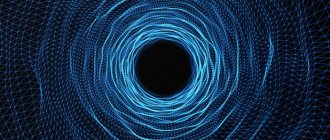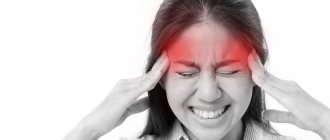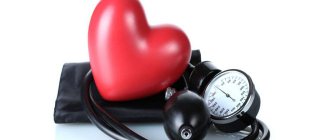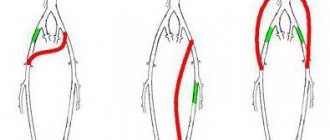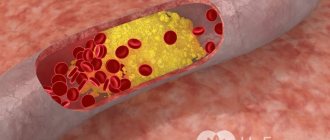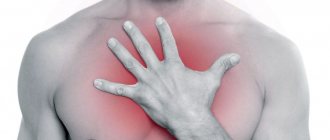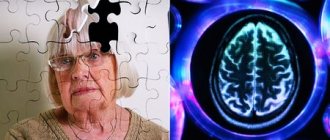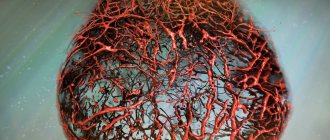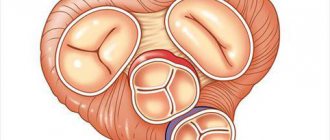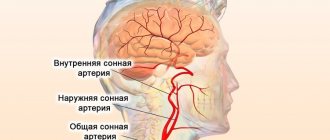Blockage of blood vessels or embolism is a dangerous disease that can lead to serious consequences for the health and life of the patient.
The reasons that blockage of blood vessels occurs can be due to a variety of mechanisms. Most often, such phenomena occur in elderly patients, although, according to medical research, blockage of blood vessels begins to “rejuvenate” and occurs in young people who lead an inactive lifestyle and spend a long time in a sitting position . When a person does not move, blood cannot circulate throughout the body in the correct mode, circulatory disorders occur, which leads to the development of vascular disease in the brain, heart, lower extremities, and atherosclerosis appears.
What is and features of blockage
Blockage in blood vessels can be endogenous or exogenous. Fatty tissue, blood clots, particles of veins, blood arteries, tumors cause endogenous blockage. Exogenous embolism occurs due to injuries, erroneous medical procedures, wounds, ingestion of parasites, and foreign bodies.
Features of occlusion:
- Blood clots form in arteries and veins, where blood circulation is slower. Blood clots can travel through the bloodstream.
- Atherosclerotic plaques, consisting of excess cholesterol, narrow the lumen of blood vessels, stopping blood flow.
- Atherothrombotic blockage is a mixed type.
Symptoms leading to blockage:
- systematic headache;
- feeling of numbness in the limbs;
- sleep disorders;
- migraines, tinnitus;
- increased fatigue;
- impairment of memory, attentiveness;
- unsteady gait.
Signs and treatments for blocked blood vessels in the legs
Leg pain that occurs during physical activity (running, long walking, cycling) is not always the result of normal muscle strain. Much more often, this symptom indicates that there is a blockage of blood vessels in the legs - both veins and arteries of the lower extremities.
This condition is varied in its manifestations. If a person has a lameness that affects both limbs, one can suspect the early development of occlusion (blocking the lumen) of the arteries of the lower extremities. It is a consequence of a disease such as atherosclerosis. Due to sudden blockage of the lumen by a blood clot, which breaks off and begins to move, thromboembolism often develops - a most dangerous condition.
- spicy;
- chronic.
Factors affecting blockage
- an unbalanced diet with a predominance of fatty foods and fast food is dangerous for the formation of cholesterol plaques;
- a sedentary lifestyle contributes to blood stagnation;
- excessive consumption of alcohol and cigarettes affects the elasticity of tissues;
- excess weight leads to additional stress on the circulatory system;
- stress;
- genetic predisposition;
- diabetes;
- taking contraceptives;
- lipid metabolism disorders.
Causes of the disease
Cerebral embolism appears in patients when exposed to a number of provoking factors:
- Drinking insufficient water . If the drinking regime is violated, the viscosity of the blood increases. This leads to disruption of normal blood flow.
- Genetic predisposition . People whose relatives suffered from the disease are at risk.
- Stressful situations . With the constant experience of positive and negative emotions, patients develop illness.
- Bad habits . When the body is exposed to nicotine, alcohol and drugs, a person’s blood thickens, which leads to an increased risk of thrombosis. When blood vessels become clogged, they become sluggish, lose elasticity, and form plaques.
- The predominance in the diet of foods that contain fats and carbohydrates in large quantities . With improper nutrition, waste appears in the blood, and plaques appear on the walls of blood vessels.
- Physical inactivity . With insufficient physical activity and a sedentary lifestyle, circulation and free flow of blood through the vessels are disrupted.
Pathology is diagnosed for a variety of diseases. People who suffer from varicose veins are at risk. The disease develops in patients with thrombophlebitis. Insufficiency of blood coagulation function becomes the cause of pathology. The cause of the disease is atherosclerosis. The likelihood of developing the disease increases in people with diabetes mellitus or autoimmune vascular changes .
With obesity and impaired metabolism, patients are diagnosed with the disease. During pregnancy, there may be an increase in blood clotting, which leads to illness. It develops if a large amount of substances is released in the patient's body, which leads to blood thickening. If a person takes certain medications, this leads to pathology.
Blockage of blood vessels in the brain is observed during diseases in the human body and exposure to various provoking environmental factors.
Prevention rules
- balanced diet. Limit the consumption of spicy, salty, fatty foods. Introduce vegetables and fruits into the diet;
- healthy lifestyle: active physical activity, adequate sleep and rest;
- rejection of bad habits;
- avoid stress;
- fight against excess weight.
Hard cheeses, fatty meats, lard, chocolate, smoked products, fast food should be limited, they contain a large amount of bad cholesterol. Introduce grains, dairy products, fruits and vegetables into your diet.
What to do if the brain vessels are clogged
Blockage of blood vessels supplying blood to the brain occurs due to metabolic disorders, diseases and pathological conditions. These include stenosis (persistent narrowing of the vascular lumen) and the presence of foreign, atypical particles in the bloodstream, including blood clots (thrombi).
Atherosclerotic damage to the arteries, accompanied by the formation of cholesterol plaques on the inner surface of the vascular wall, ranks first among the causes of mortality and disability in the population. Atherosclerosis affecting the brachiocephalic arteries is the leading cause of ischemic stroke.
Characteristic
Blocked blood vessels cause the development of life-threatening conditions such as cerebral infarction and stroke. Mortality from stroke is about 30-70% of cases. Brachiocephalic arteries (carotid, vertebral) are the main routes through which blood flows to the parts of the brain.
Statistics show that atherosclerotic damage to the brachiocephalic arteries, which lie in the neck and supply the brain, is asymptomatic in 30% of cases.
In 60% of patients, atherosclerosis of the neck vessels is manifested by repeated ischemic attacks (TIA). Damage and narrowing of the carotid arteries occurs with equal frequency on one side and on both sides.
Insufficiency of cerebral blood flow correlates with the degree of stenosis (narrowing) of the carotid artery bed.
Stenosing lesions of other brachiocephalic arteries (subclavian, vertebral) are more often detected on one side. Compensatory mechanisms maintain the possibility of blood flow for a long time even in the case of significant narrowing of the lumen. Studies show the presence of blood flow in unilateral stenosis of the subclavian or vertebral artery in a volume reaching 75%.
Common localization of cholesterol plaques: the mouth of the vertebral, middle, and anterior cerebral arteries, as well as bifurcations (bifurcation areas) and siphons (segment bends) of the carotid arteries. For example, the localization of cholesterol plaques in the bifurcation zone of the carotid artery is detected in 70% of cases in the general structure of lesions of the great vessels supplying the brain.
Carotid-vertebral stenosis, which is multiple lesions of the arteries of different basins, is diagnosed in 57% of cases. Isolated damage to the walls of the carotid arteries occurs with a frequency of 24% of cases, and in 18% of patients the pathology is bilateral.
Causes
Atherosclerosis is the leading cause of clogged cerebral vessels. The disease is associated with disorders of protein and lipid metabolism.
The pathology is characterized by the formation of atherosclerotic plaques from lipid fractions; localization of deposits in the vessels of the neck and head leads to disruption of cerebral blood flow.
Damage to the carotid arteries of atherosclerotic origin is often combined with their pathological tortuosity. Other causes of cerebral vascular obstruction:
- Lipohyalinosis. Thickening of the vessel wall associated with the proliferation of hyaline (protein, glassy) tissue.
- Fibrinoid necrosis. Death of cells and vascular tissues caused by biological factors.
- Microatheroma. The formation of small cysts on the inner walls of arteries.
- Thrombosis. Formation of blood clots that interfere with normal blood flow.
- Embolism. The presence of foreign particles in the bloodstream that interfere with normal blood flow.
It depends on the type of disease what the vessels are clogged with - an embolus, a thrombus or a detached fragment of a cholesterol plaque. Clogging of the vascular lumen occurs against the background of its narrowing, provoked by the above reasons.
Provoking factors: angiopathy (impaired nervous regulation of vascular wall tone), arterial hypertension, history of diabetes mellitus. Angiopathy, in turn, correlates with pathologies such as liver, kidney and heart failure.
Factors that can provoke the development of stenosis of the main arteries include an unhealthy lifestyle, bad habits, and unhealthy diet, which leads to an increase in the concentration of cholesterol in the blood. A condition where the vessels supplying blood to the brain are clogged is often accompanied by characteristic symptoms, which makes it possible to suspect and promptly treat the pathology.
Symptoms
Symptoms of blockage of blood vessels supplying the brain depend on the nature of the damage to the vascular wall. In 29% of cases, ischemia of brain tissue is asymptomatic. 60% of patients experience transient ischemic attacks (TIA) and cerebral symptoms:
- Pain in the head area.
- Dizziness, impaired motor coordination.
- Nausea, sometimes with bouts of vomiting.
- General and muscle weakness.
- Decreased performance, increased fatigue.
- Mood swings, irritability.
- Deterioration of cognitive functions (memory, mental activity).
- Convulsive attacks of the generalized (general, widespread throughout the body) type.
If the vessels supplying blood to the brain tissue are clogged, patients experience symptoms: frequent changes in blood pressure, short-term sensitivity disorder, impaired motor function in the extremities.
Severe occlusion (obstruction) of the vessels supplying the brain leads to the development of a stroke; in this case, signs of clogged elements of the cerebral circulatory system are represented by persistent neurological symptoms of a focal type. Symptoms of clogged cerebral vessels depend on the pool in which the disturbance occurs. Signs of damage to the carotid vessels (carotid arteries) include:
- Numbness, paresthesia (sensitivity disorder) in the extremities.
- Transient speech disorders.
- Hemiparesis (paresis, muscle weakness in one half of the body).
- Deterioration of visual acuity.
Damage to the arteries of the vertebrobasilar area (subclavian, vertebral) is manifested by pain in the head area, dizziness, gait disturbance, and inability to maintain balance, which leads to falls and fainting. Many patients simultaneously experience visual dysfunction - blurred, blurred images, diplopia (double vision).
Episodes of stroke in 25-77% of cases develop against the background of atherosclerotic damage to the brachiocephalic vessels without previous neurological symptoms, which makes surgical treatment of confirmed asymptomatic atherosclerosis justified.
Observation of patients in whom cerebral atherosclerosis occurs without obvious manifestations confirms the occurrence of a history of TIA in 4% of cases within 2 years after diagnosis. In 10% of patients with diagnosed atherosclerosis, a history of TIA appears within 5 years.
Diagnostics
The attending physician will tell you what to do if the vessels of the neck and head are clogged, based on the results of a diagnostic examination. Determining the patient’s neurological status and collecting anamnesis are the primary diagnostic measures. Consultations with doctors - neurologist, cardiologist, vascular neurosurgeon - are shown. Instrumental diagnostic methods:
- MRI, CT.
- Angiography.
- Doppler ultrasound.
- Duplex scanning.
- Electrocardiography.
Instrumental research methods aimed at studying the vascular bed make it possible to identify the nature of the disorders and the exact localization of the pathological focus. A blood test shows the concentration of cholesterol and glucose.
Treatment
Your doctor will advise you on what to do if the blood vessels supplying the brain are clogged. Treatment is prescribed taking into account the nature and extent of damage to the cerebral circulatory system, the patient’s age, and the presence of concomitant chronic diseases.
To prevent pathology, doctors recommend leading a healthy, active lifestyle, giving up bad habits, establishing a daily routine, organizing a nutritious diet low in trans fats and saturated fats, high in plant fiber, vitamins, and microelements.
Differences between phlebothrombosis and thrombophlebitis
| Phlebothrombosis | Thrombophlebitis |
| In the deep veins. | Affects superficial veins. |
| Not inflamed veins. | Veins affected by varicose veins. |
| Sharp pain in the limb, pain radiates to the groin area. The limb is swollen, the color is bluish. Temperature rises above 40°C, chills. | Pain, swelling, uniform swelling, increased body temperature up to 39°C. The patient complains of weakness and malaise. The limb is warm. Symptoms are mild or absent. |
| Fixation of the limb (immobilization), taking anticoagulants, disaggregants, phlebotonics. | Fixing the limb with a splint, using elastic bandages, prescribing anticoagulants and anti-inflammatory drugs. |
If pathology is detected early, these diseases can be treated. When treating diseases, you should combine medicinal and traditional methods. Therapy is carried out with a balanced diet and a healthy lifestyle.
The article was approved by the editors
Symptoms
Common signs of blockage of blood vessels in the brain caused by a lack of oxygen and nutrients include the following symptoms:
- daytime drowsiness followed by insomnia at night;
- short-term fainting states;
- migraine accompanied by nausea;
- pain in the eye sockets and forehead;
- dizziness;
- seizures;
- autonomic disorders (double vision, decreased skin sensitivity, increased sweating, tremors of the limbs, chest pain, tachycardia).
Focal symptoms depend on the location of the blocked vessel. When obstruction of the carotid artery occurs, the following symptoms occur:
- unilateral paralysis or paresis;
- speech disorder of the type aphasia (impossibility of constructing phrases);
- decreased visual acuity in one eye.
Lesions of the choroidal artery are characterized by the following manifestations:
- paralysis of the side opposite to the blockage;
- decreased sensitivity of the limbs;
- slow speech;
- violation of orientation in space;
- bilateral vision loss, up to blindness.
When the anterior cerebral vessels are blocked, the following symptoms occur:
- increased muscle tone on the side of the body opposite to the affected area of the brain;
- leg paralysis;
- the appearance of a grasping reflex;
- inability to clearly pronounce soft and hard sounds.
When the middle arteries of the brain are blocked, the following symptoms are observed:
- decreased muscle tone or its complete disappearance;
- impaired sensitivity of the skin;
- bilateral decrease in visual acuity;
- speech disorders;
- impaired coordination of movements;
- tactile perception disorder.
The clinical picture of vascular lesions in the posterior parts of the brain includes such manifestations as:
- decreased muscle tone on the side of the body opposite to the blockage;
- memory impairment (sometimes patients forget all events that occurred before the onset of the disease);
- impairment of oral speech without loss of the ability to express thoughts in writing;
- ataxia (impaired synchronization of muscles in different parts of the body).
Important information: Aortic valve stenosis (narrowing of the aorta) of the heart in newborns
When the blood vessels in the cervical region are blocked, the following symptoms occur:
- unilateral ataxia;
- decreased muscle tone of the upper limbs and torso;
- paresis of facial muscles;
- involuntary contractions of the palate;
- headaches, dizziness;
- attacks of nausea and vomiting;
- isolation syndrome (lack of patient response to external stimuli, information transfer is possible only through eye movements).
Diagnostics
The attending physician will tell you what to do if the vessels of the neck and head are clogged, based on the results of a diagnostic examination. Determining the patient’s neurological status and collecting anamnesis are the primary diagnostic measures. Consultations with doctors - neurologist, cardiologist, vascular neurosurgeon - are shown. Instrumental diagnostic methods:
- MRI, CT.
- Angiography.
- Doppler ultrasound.
- Duplex scanning.
- Electrocardiography.
Instrumental research methods aimed at studying the vascular bed make it possible to identify the nature of the disorders and the exact localization of the pathological focus. A blood test shows the concentration of cholesterol and glucose.
Treatment
Your doctor will advise you on what to do if the blood vessels supplying the brain are clogged. Treatment is prescribed taking into account the nature and extent of damage to the cerebral circulatory system, the patient’s age, and the presence of concomitant chronic diseases.
To prevent pathology, doctors recommend leading a healthy, active lifestyle, giving up bad habits, establishing a daily routine, organizing a nutritious diet low in trans fats and saturated fats, high in plant fiber, vitamins, and microelements.
Drug therapy
When the vessels supplying blood to the brain are blocked, treatment is carried out with pharmaceuticals - statins (lower cholesterol concentrations), cerebral blood flow correctors (improves blood microcirculation), anticoagulants (prevent the formation of blood clots), thrombolytics (dissolve blood clots). In the presence of heart disease, medications are prescribed to correct cardiac activity.
Surgery
When symptoms of blockage of blood vessels supplying the brain appear, diagnostics and adequate surgical treatment are carried out, which is considered the most effective (in comparison with drug methods). If the vascular lumen is narrowed by more than 50%, surgical intervention is recommended to prevent the development of a stroke. Methods of neurosurgical treatment:
- Carotid endarterectomy (removal of atherosclerotic plaque from the artery cavity).
- Endovascular stenting (removal of emboli and thrombi that obstruct blood flow, followed by installation of a stent in the artery cavity, which prevents narrowing of the lumen).
- Bypass surgery, prosthetics of brachiocephalic arteries (restoration of the circulatory network).
- Correction of deformations of elements of the circulatory system of the brain.
- Extra-intracranial microanastomosis (creation of an artificial connection between the temporal and middle arteries for chronic occlusion of the internal carotid artery).
Surgeries for revascularization (restoration of the vascular network) of the brain are considered as a prevention of ischemic stroke and as a method of treating chronic cerebral ischemia.
Traditional methods
If blood vessels are clogged, you need to do classic and acupressure massage in the neck, shoulder girdle and head, which will help improve cerebral blood circulation. To achieve results, an integrated approach is required - using several methods of stimulating cerebral blood flow simultaneously.
If the main arteries supplying blood to the brain are clogged, use products made from garlic. It is eaten in crushed form, adding to various dishes to taste. Garlic contains adenosine, a nucleoside that has cytoprotective (protects cells from damage) and anti-inflammatory effects.
A tincture is prepared from garlic, which cleanses blood vessels, strengthens the immune system and increases vitality. Take 350 g of garlic, chop it, and squeeze out the juice. The concentrated juice is diluted with medical alcohol in a ratio of 1 to 1. The solution is poured into a dark glass bottle and left for 10 days in a cool place.
The tincture is taken three times during the day, successively increasing the dosage by 1 drop. For example, in the morning of the 1st day, drink 1 drop of tincture diluted with water or milk in a volume of 50 ml. At lunch, drink 2 drops, diluted in the same way, in the evening - 3 drops, in the morning of the next day - 4 drops.
The medicine is continued to be taken according to the regimen, gradually increasing the volume to 25 drops. Then continue to drink 25 drops three times a day until the medicine runs out. If cerebral vessels are clogged, traditional healers recommend taking decoctions and infusions prepared from medicinal plants. Several recipes:
- Recipe 1. Bay leaves (7 g of dry raw material) are poured with water (0.5 l), boiled for 5 minutes, infused in a thermos for 4 hours. Drink between meals, taking a few sips.
- Recipe 2. Rose hips (2 tablespoons of dry raw materials) are mixed with crushed pine needles (5 tablespoons), poured with water (0.7 l), boiled for 10 minutes, infused in a thermos for 6 hours, filtered. Drink the entire amount throughout the day. Course – 30 days.
- Recipe 3. Horse chestnut (50 g of crushed raw materials) is poured with vodka (0.5 l), infused for 2 weeks, left in a dark place, shaking the bottle regularly. The finished tincture is filtered and taken 3 times daily, 30 drops each. Course – 30 days.
It is useful to drink green and herbal tea with honey and lemon. A mixture is prepared from lemon, orange and honey, which improves the condition of the vascular wall. Fruits, taken in groups of 2, are thoroughly ground in a blender. Add honey (2 tablespoons) to the resulting gruel, mix, leave for 24 hours, and store in the refrigerator. Use 2 tbsp. spoons of the product three times daily before meals.
